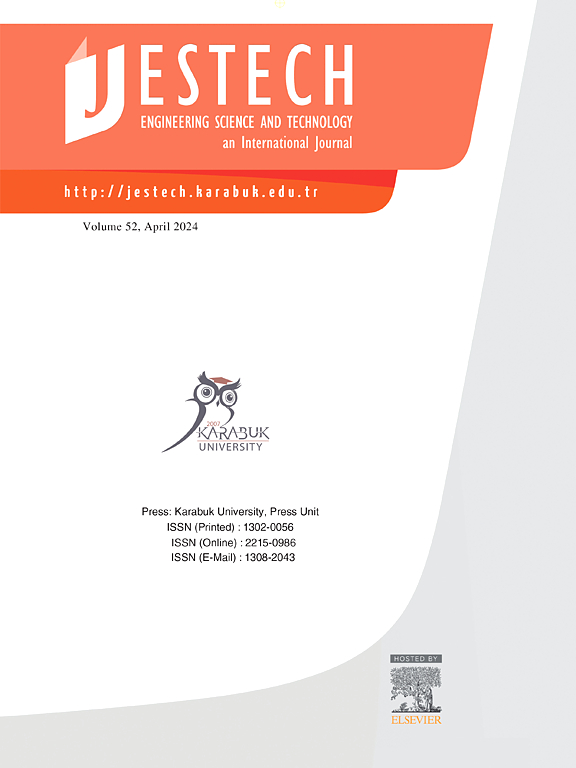在 3DCP 混合物中利用废料:流变和抗压强度综述
IF 5.1
2区 工程技术
Q1 ENGINEERING, MULTIDISCIPLINARY
Engineering Science and Technology-An International Journal-Jestech
Pub Date : 2024-10-14
DOI:10.1016/j.jestch.2024.101846
引用次数: 0
摘要
三维混凝土打印(3DCP)是制造业和建筑业的一项先进技术。这项技术目前是开发尖端机械的重要组成部分,可以解决传统建筑施工面临的许多难题。尽管 3DCP 具有诸多优势,但其所用材料的质量仍需进一步关注,以达到既定的混凝土标准。因此,利用 3DCP 技术的可持续废物来源改革传统建筑业是一种战略方法。由于目前的 3DCP 材料范围仍然有限,因此扩大选择范围,纳入更多生态友好型材料将大有裨益。本文旨在探讨在建筑施工中利用废物资源作为 3DCP 混合物的辅助胶凝材料(SCM)的潜力。它回顾了最近和过去有关可持续废物(橡胶、聚合物、建筑、工业、再生砂和玻璃)产品作为三维氯丙烷混合物的补充或添加物的研究。研究了 3DCP 混合物的流变和抗压强度特性,并与其他废料进行了对比。所有收集到的信息都将根据文献研究进行审查,以确定 3DCP 的组合,从而改善建筑材料。在 3DCP 混合物中使用废弃物作为 SCM 成分有助于可持续建筑实践。废物材料已显示出改善三维打印混凝土流变性(坍落度、工作性、挤出性)和抗压强度的潜力。与传统的建筑施工方法相比,优化 3DCP 中的废弃物将有助于最大限度地减少废弃物的产生,并最大限度地提高商品的使用效率。因此,在 3DCP 混合物中加入可持续废物是一个大有可为的研究领域,值得进一步研究。本文章由计算机程序翻译,如有差异,请以英文原文为准。
Utilising waste material in a 3DCP mixture: A review on rheological and compressive strength
3D Concrete Printing (3DCP) is an advanced technology in manufacturing and building sector. This technology is now a crucial component for developing cutting-edge machinery that could resolve many challenges faced by conventional building construction. Despite their benefits, the quality of materials used in 3DCP still requires further attention to meet established concrete standards. Therefore, reforming the conventional construction industry with sustainable waste sources for 3DCP technology is a strategic approach. Since the current range of 3DCP material is still restricted, expanding the selection to include more eco-friendly options could be highly beneficial. This paper aims to explores the potential in utilizing waste sources as a supplementary cementitious material (SCM) for 3DCP mixture in building construction. It reviews the recent and past research pertinently on sustainable waste (rubber, polymer, construction, industrial, recycled sand, and glass) products as supplements or additions for the 3DCP mixture. Rheological and compressive strength characteristics of the 3DCP combination are examined and contrasted with those of other waste materials. All gathered information will be examined considering the literature research to identify the combination for 3DCP to achieve improvement in building materials. Using waste as an SCM component in 3DCP mixtures supports sustainable construction practices. Waste materials have shown potential to improve the rheology (slump, workability, extrudability) and compressive strength of 3D-printed concrete. Compared to the conventional building construction method, optimising waste in a 3DCP will promote efforts to minimise waste creation and maximise the efficient use of commodities. Therefore, incorporating sustainable waste into 3DCP mixtures is a promising area of study for further research.
求助全文
通过发布文献求助,成功后即可免费获取论文全文。
去求助
来源期刊

Engineering Science and Technology-An International Journal-Jestech
Materials Science-Electronic, Optical and Magnetic Materials
CiteScore
11.20
自引率
3.50%
发文量
153
审稿时长
22 days
期刊介绍:
Engineering Science and Technology, an International Journal (JESTECH) (formerly Technology), a peer-reviewed quarterly engineering journal, publishes both theoretical and experimental high quality papers of permanent interest, not previously published in journals, in the field of engineering and applied science which aims to promote the theory and practice of technology and engineering. In addition to peer-reviewed original research papers, the Editorial Board welcomes original research reports, state-of-the-art reviews and communications in the broadly defined field of engineering science and technology.
The scope of JESTECH includes a wide spectrum of subjects including:
-Electrical/Electronics and Computer Engineering (Biomedical Engineering and Instrumentation; Coding, Cryptography, and Information Protection; Communications, Networks, Mobile Computing and Distributed Systems; Compilers and Operating Systems; Computer Architecture, Parallel Processing, and Dependability; Computer Vision and Robotics; Control Theory; Electromagnetic Waves, Microwave Techniques and Antennas; Embedded Systems; Integrated Circuits, VLSI Design, Testing, and CAD; Microelectromechanical Systems; Microelectronics, and Electronic Devices and Circuits; Power, Energy and Energy Conversion Systems; Signal, Image, and Speech Processing)
-Mechanical and Civil Engineering (Automotive Technologies; Biomechanics; Construction Materials; Design and Manufacturing; Dynamics and Control; Energy Generation, Utilization, Conversion, and Storage; Fluid Mechanics and Hydraulics; Heat and Mass Transfer; Micro-Nano Sciences; Renewable and Sustainable Energy Technologies; Robotics and Mechatronics; Solid Mechanics and Structure; Thermal Sciences)
-Metallurgical and Materials Engineering (Advanced Materials Science; Biomaterials; Ceramic and Inorgnanic Materials; Electronic-Magnetic Materials; Energy and Environment; Materials Characterizastion; Metallurgy; Polymers and Nanocomposites)
 求助内容:
求助内容: 应助结果提醒方式:
应助结果提醒方式:


